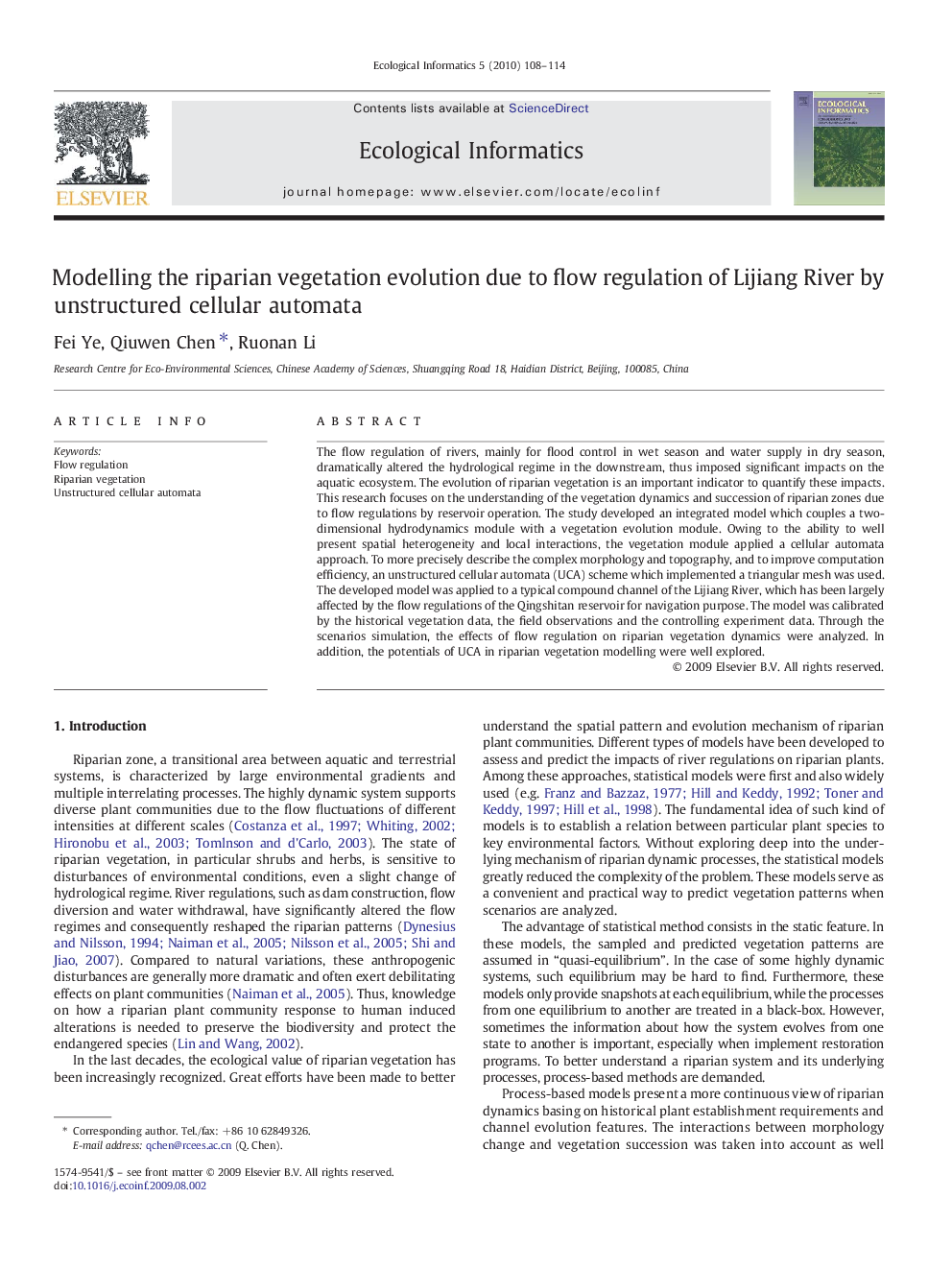| کد مقاله | کد نشریه | سال انتشار | مقاله انگلیسی | نسخه تمام متن |
|---|---|---|---|---|
| 4375340 | 1303261 | 2010 | 7 صفحه PDF | دانلود رایگان |

The flow regulation of rivers, mainly for flood control in wet season and water supply in dry season, dramatically altered the hydrological regime in the downstream, thus imposed significant impacts on the aquatic ecosystem. The evolution of riparian vegetation is an important indicator to quantify these impacts. This research focuses on the understanding of the vegetation dynamics and succession of riparian zones due to flow regulations by reservoir operation. The study developed an integrated model which couples a two-dimensional hydrodynamics module with a vegetation evolution module. Owing to the ability to well present spatial heterogeneity and local interactions, the vegetation module applied a cellular automata approach. To more precisely describe the complex morphology and topography, and to improve computation efficiency, an unstructured cellular automata (UCA) scheme which implemented a triangular mesh was used. The developed model was applied to a typical compound channel of the Lijiang River, which has been largely affected by the flow regulations of the Qingshitan reservoir for navigation purpose. The model was calibrated by the historical vegetation data, the field observations and the controlling experiment data. Through the scenarios simulation, the effects of flow regulation on riparian vegetation dynamics were analyzed. In addition, the potentials of UCA in riparian vegetation modelling were well explored.
Journal: Ecological Informatics - Volume 5, Issue 2, March 2010, Pages 108–114